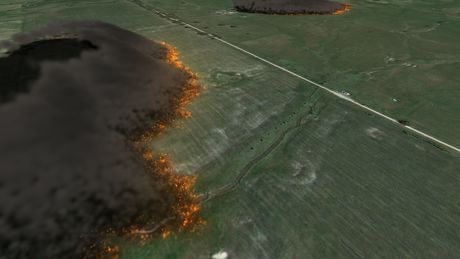Prediction software to fight bushfires

The CSIRO has released a software tool that can predict the severity and spread of destructive bushfires.
The ‘Spark’ software will give firefighting agencies insight into fire behaviour, helping them to make informed decisions that could save lives and property.
Spark takes current knowledge of fire behaviour and combines it with state-of-the-art simulation science to predict the future location of bushfires and the spread of those already burning. It has been developed as an open framework for fire prediction and analysis, making it simple for fire agencies to incorporate the software into their existing system.
“Spark has the potential to be used operationally for real-time fire spread modelling of bushfires,” said Dr Mahesh Prakash, one of CSIRO’s computational modelling researchers.
“This information is invaluable for emergency management decision-makers for predicting risk, deploying firefighting resources or planning evacuation routes.
“The next step is to work with the rural fire authorities and land management agencies to incorporate Spark into bushfire planning and management processes.”
The framework uses geospatial data, such as vegetation types, topography and unburnable elements such as roads and bodies of water. It also looks at weather data such as air temperature, humidity, wind speed and wind direction and then uses this data to model the spread of a fire based on its specific location and current environmental conditions.
“We have had the capacity to model the spread of bushfires for more than 20 years. Spark takes that technology into the 21st century by marrying the foundation of our fire behaviour knowledge with the state of the art in simulation science,” said Dr Andrew Sullivan, CSIRO’s bushfire behaviour expert.
The data and modelling software is also anticipated to help reduce the financial burden of disasters on the global economy, which can be severe, as the Black Saturday tragedy was estimated to have cost $4.4 billion according to estimates from the Victorian Bushfires Royal Commission.
The CSIRO claims in south-east Australia the fire season is becoming longer, reducing the opportunities for hazard reduction burning, and it is therefore crucial that communities, emergency services, health services and other authorities prepare for the increasing severity and frequency of extreme fire conditions.
To view a demonstration video of Spark, click here: https://research.csiro.au/spark/.
Providing mental health support to young workers
Mental health is one of the leading reasons young workers do not finish their apprenticeships...
New psychology division supports organisational compliance
In recognition of the need to protect workers from psychosocial hazards in the workplace, Rehab...
Roof plumber dies after five-metre fall
The death of a 71-year-old roof plumber in October is currently being investigated by WorkSafe WA.







